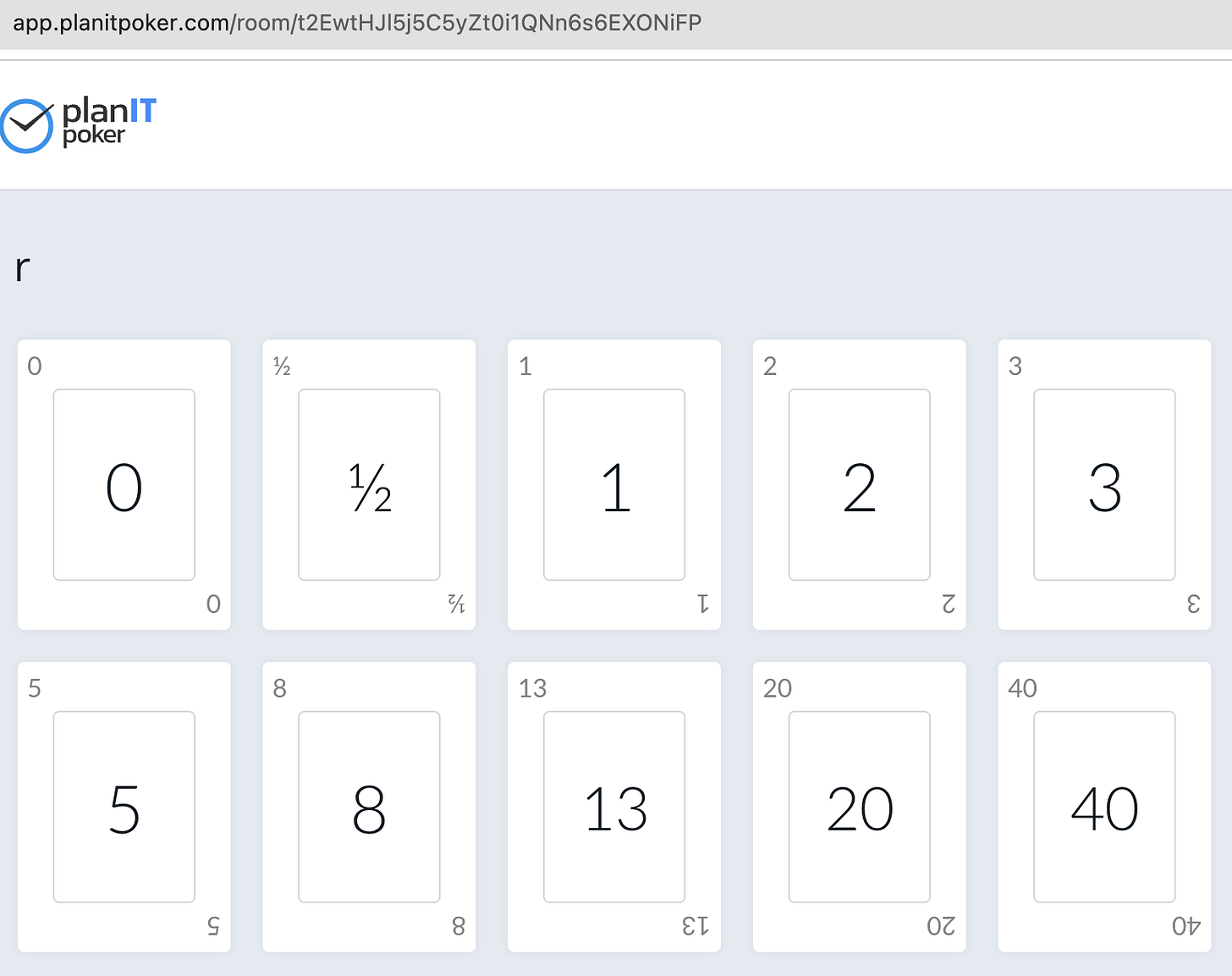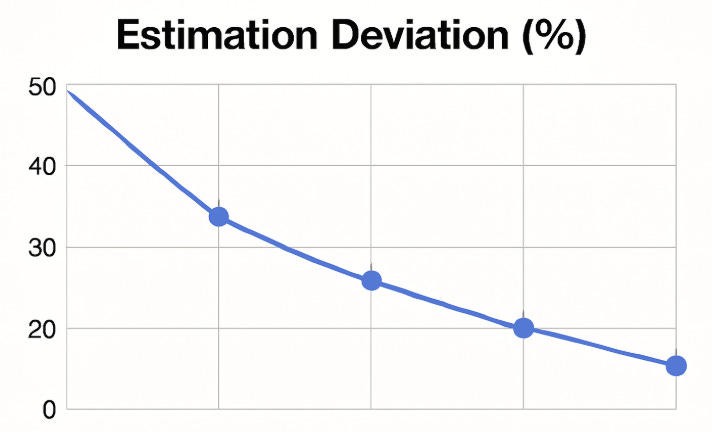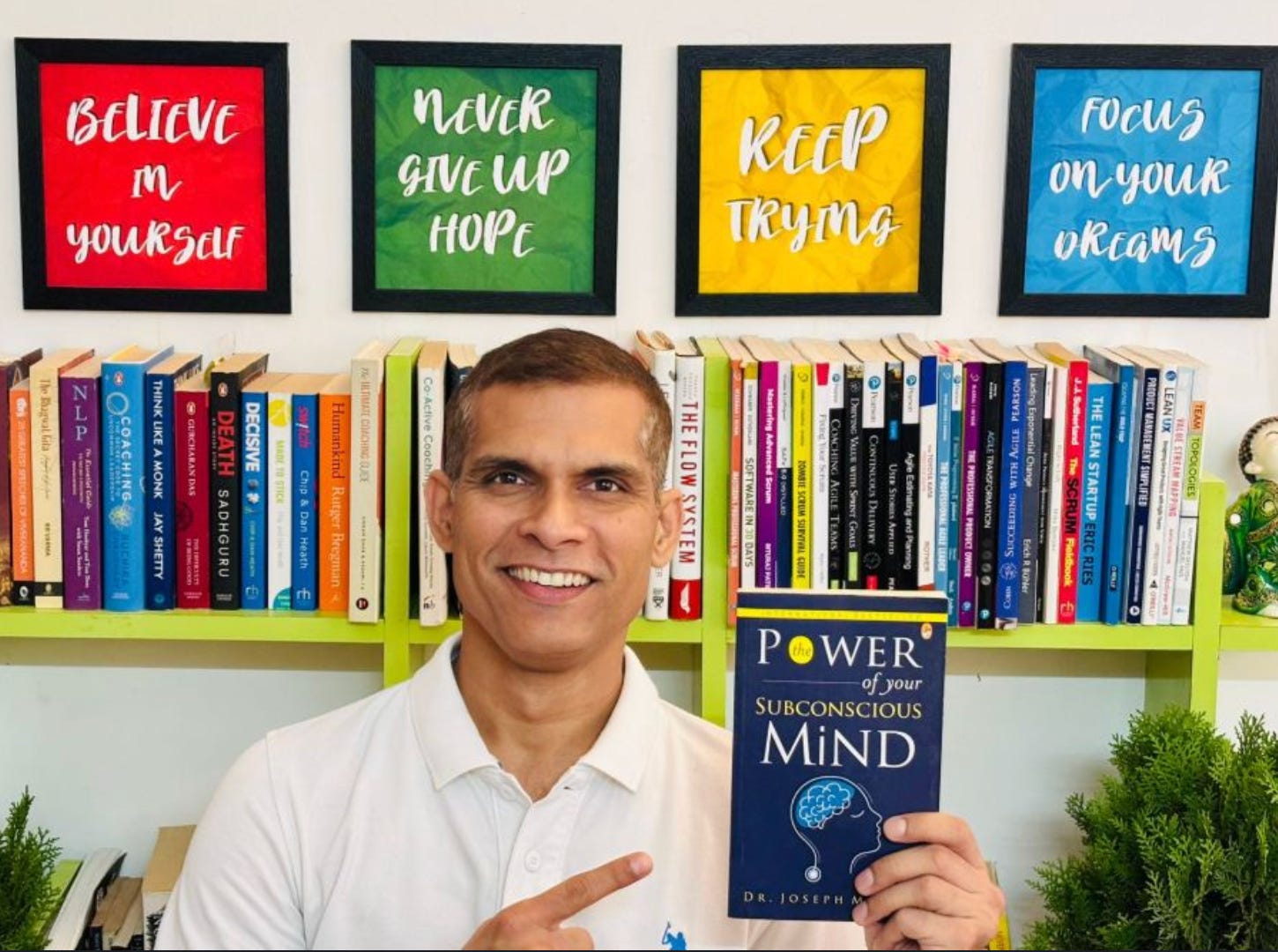What I Learned After Running 100+ Estimation Sessions!
A real-world playbook to align your team, end estimation chaos, and bring meaning back to story points.
I still remember this one refinement session — it was supposed to take 30 minutes.
We had a simple story: “User can reset password.”
And somehow, that story turned into a warzone.
Developer A: “It’s a 3.”
Developer B: “No, it’s an 8 — there’s an external API!”
QA: “But we already did this in another module.”
PO: “Can we skip the points and just deliver it fast?”
Voices rose.
People were frustrated.
Someone even said, “We’re wasting time debating fake numbers.”
That was the day I realised — estimation fights aren’t about numbers. They’re about alignment.
We were arguing “how hard it is for me” instead of “how big it is for us.”
Since then, I’ve coached multiple teams through this same pain — from startup chaos to enterprise-level sprints — and I’ve learned one thing:
You don’t fix story point fights with process; you fix them with shared understanding.
Here’s my 5-step playbook that I now use (and teach in my Bootcamp) whenever estimation chaos starts creeping back.
5 Field-Tested Strategies to Bring Calm to Estimation Chaos
🔹 Strategy 1: Start With Alignment, Not Numbers
When I joined one team, they were using story points but nobody agreed what they actually meant.
Developers sized based on effort. QA sized based on test cases. The PO thought it was about time.
So every Planning Poker session felt like a mini World War.
Here’s how I fixed it:
Run a 15-minute “Estimation Alignment Workshop.”
Ask the group: “What do story points represent for us — time, effort, complexity, or uncertainty?”
Let everyone share and document it visually.
Guide them to agree on this trio: Complexity + Uncertainty + Effort.
Establish anchor stories.
Pick 3 real past stories that everyone remembers:
Small (e.g., “Change logo color”) = 2 pts
Medium (“Add password reset”) = 5 pts
Large (“Integrate payment gateway”) = 8 pts
Print or pin them on your board as “reference cards.”
Start each estimation by revisiting anchors.
“Is this story more like our 5 or closer to our 8?”
Challenge: People keep slipping back into “hours” thinking.
Tip: Whenever someone says, “It’ll take 2 days,” gently redirect: “Let’s talk about complexity, not duration.”
🔹 Strategy 2: Use Planning Poker the Right Way
I used to run Planning Poker like a democracy. Everyone voted, argued, and we averaged the number.
That’s not facilitation — that’s negotiation.
Now I do it differently.
Here’s the new sequence:
Explain the story clearly first. Ask:
“What’s the acceptance criteria?”
“Any external dependencies?”
“Anything that makes this harder than it looks?”
Give silent reading time (2–3 mins).
This avoids people anchoring on the loudest voice.
Everyone votes privately using cards or digital tools (Miro, Jira, Planning Poker app).
Example: 2 people vote 3, one votes 8, one votes 5.
Ask the golden question:
“What assumption are you making that led to that number?”
You’ll see magic — disagreements turn into insights.
The backend dev may say, “I thought we’d build new APIs.”
The frontend dev may say, “I assumed we’re using existing endpoints.”
And suddenly, conflict turns into clarity.Let high and low estimators explain first. Then re-vote.
Challenge: The conversation drifts into solutioning.
Tip: Use a timebox: 5 mins per story. Say: “If we’re still split after two rounds, we’ll slice or spike it.”
🔹 Strategy 3: Split Stories That Can’t Be Agreed On
At one fintech client, I had a team that always argued over 13-point stories.
The backend folks said, “It’s 8.” QA said, “It’s 13.”
When I asked why, both were right — they were talking about different scopes.
So we stopped arguing about the number and looked at the story itself.
Here’s the slicing approach I used:
Pause the estimation immediately when votes differ widely.
“Let’s stop for 5 minutes and explore what’s hiding inside.”Ask these prompts:
“Can we slice this by user flow?” (e.g., “Reset by email” vs “Reset by SMS”)
“Can we slice by system layer?” (e.g., “UI” vs “Backend validation”)
“Can we slice by acceptance path?” (e.g., “Happy path” vs “Error handling”)
Estimate again on the smaller stories.
Example:
Our “Profile Revamp” (13 pts) became:
“Edit basic info” (5 pts)
“Upload profile photo” (3 pts)
“Notifications settings” (3 pts)
It reduced arguments and helped the team deliver something usable faster.
Challenge: PO thinks slicing slows delivery.
Tip: I tell them, “You’ll get working software faster — just in smaller batches.”
🔹 Strategy 4: Handle Heated Debates Diplomatically
I once had two senior engineers who turned every estimation session into a turf war.
One said “3,” the other said “8,” and both refused to budge.
Here’s what I did — and it changed the dynamic permanently.
Step-by-step:
Pause the fight. Say:
“Let’s stop debating numbers — sounds like we’re estimating different assumptions.”Write down both assumptions.
“Assumption A: reuse existing service.”
“Assumption B: build new one.”
Ask the PO: “Which approach are we likely to take?”
That single question defused ego and clarified scope.Estimate again — this time, just one scenario.
If still unclear: Mark as “Spike Story,” timebox to 1 day, and estimate afterward.
Example:
At one telecom project, we used a “Spike Card” every time an argument couldn’t be resolved within 10 minutes. Within 3 sprints, estimation time dropped by 40%.
Challenge: Dominant voices hijack discussion.
Tip: Rotate who speaks first. Ask quieter members, “What do you think?” before the seniors jump in.
Visual: Whiteboard with two columns “Option A / Option B” listing assumptions underneath.
🔹 Strategy 5: Make Estimation Useful After the Meeting
Too many teams estimate stories and never revisit them.
That’s like taking a medical test and never checking your results.
I learned this the hard way.
At one project, I realised our velocity was stable but our accuracy wasn’t — we were consistently underestimating stories by 30%.
So I started tracking a new metric: the Estimation Delta.
Here’s how:
Create a simple Excel or Google Sheet:
Columns:Sprint
Story Points Committed
Story Points Delivered
Delta (%) = (Delivered – Committed) / Committed
After each Sprint Review, fill it in.
Discuss the pattern every 3 Sprints:
“Are we consistently underestimating?”
“Is our calibration outdated?”
If deviation > 30%, refresh your anchor stories.
Example:
One team’s deviation dropped from 50% to 10% after we recalibrated reference stories quarterly.
Challenge: Teams see it as extra reporting.
Tip: Make it visual — plot a trend line and celebrate when variance reduces.
🔹 Closing Thought
Next time a heated debate breaks out, just pause and say this line:
“Before we vote, can we write down what each of us is assuming?”
Do that once — and watch 70% of estimation chaos disappear.
Story points don’t break teams — the lack of shared assumptions does.
The day your team starts using story points as a conversation tool instead of a competition,
you’ll never have to referee an estimation fight again.
🔹 Turn Estimation Chaos into Clarity — Practice It Live!
If you want to practice these exact estimation facilitation techniques live, join my next Scrum Career Accelerator - Community of Practice.
We don’t just talk about story points — we run real refinement sessions, conflicts and all.
🚀 Join us this Saturday. Practice real scenarios, get coached live, and build the confidence to lead your next refinement like a pro.
Register Now - https://us06web.zoom.us/meeting/register/1grzEYk_Qqa1pT8PWfxmlQ
🎯 Ace Every Interview Question on Estimation — With Real Answers That Work
Ever been asked in an interview:
“How do you handle estimation disagreements within your team?”
Or worse —
“What would you do if leadership demands fixed timelines?”
Most candidates freeze.
Not because they don’t know Scrum —
but because they’ve never had to explain estimation like a real-world coach.
That’s exactly why I’ve created a Practical Estimation Interview Question Set — based on actual scenarios I’ve faced in teams and coached people through.
Inside this guide, you’ll find:
✅ 10 real interview questions on estimation techniques and challenges
✅ Story-style sample answers (based on real facilitation experiences)
This isn’t theory — it’s straight from live sessions, retros, and messy sprint debates.
If you’re preparing for Scrum Master, Agile Coach, or Product Owner interviews, this is your go-to prep pack.
📥 Download your free Estimation Interview Q&A Set here →
Start preparing like the professionals who actually run estimations — not just talk about them.
📚 From My Shelf
📘 This Week’s Book: The Power of Your Subconscious Mind by Dr. Joseph Murphy
A life-changing read for anyone working on mindset and belief.
Dr. Joseph Murphy doesn’t talk about magic.
He talks about the quiet power of thoughts, emotions, and repetition the forces that program our subconscious mind.
The kind of inner work that turns doubt into direction and fear into faith.
What influenced me most?
“Change your thoughts, and you change your destiny.”
For any Scrum Master or Product Owner striving to grow in uncertain times this book is a masterclass in inner alignment, not external validation.
Have you read it? Which idea stayed with you the most?
Why Subscribe
Each week, I share battle-tested strategies, messy lessons, and practical tools that help Scrum Masters, Product Owners, and change agents like you make sense of chaos — without sugar-coating it.
If you found this useful, subscribe.
This isn’t theory. It’s real work, made a little easier — one step at a time.
Thanks for reading Strategy For Success! Subscribe for free to receive new posts and support my work.
“Just because I understand it, does not mean everyone understands it. And just because I do not understand it, does not mean no one understands it.”
Thanks for reading Strategy For Success! Subscribe for free to receive new posts and support my work.









